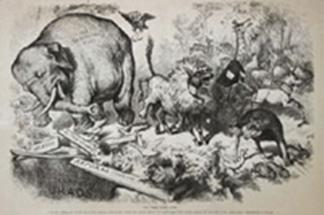Conversion of a Liberal Democrat… A very good read
A young woman was about to finish her first year of college.
Like so many others her age, she considered herself
to be a very liberal Democrat, and was very much in favor of the redistribution
of wealth.
She was deeply ashamed that her father was a rather staunch Republican, a
feeling she openly expressed. Based on the lectures that she had participated
in, and the occasional chat with a professor, she felt that her father had
for years harbored an evil, selfish desire to keep what he thought should
be his.
One day she was challenging her father on his opposition to higher taxes on
the rich and the addition of more government welfare programs. The self-professed
objectivity proclaimed by her professors had to be the truth and she indicated
so to her father.
He responded by asking how she was doing in school. Taken aback, she answered
rather haughtily that she had a 4.0 GPA, and let him know that it was tough
to maintain, insisting that she was taking a very difficult course load and
was constantly studying, which left her no time to go out and party like other
people she knew. She didn't even have time for a boyfriend, and didn't really
have many college
friends because she spent all her time studying.
Her father listened and then asked, "How is your friend Audrey doing?" She replied, "Audrey is barely getting by. All she takes are easy classes, she never studies,
and she barely has a 2.0 GPA. She is so popular on campus, college for her
is a blast. She's always invited to all the parties, and lots of times she
doesn't even show up for classes because she's too hung over."
Her wise father asked his daughter, "Why don't you go to the Dean's office
and ask him to deduct a 1.0 off your GPA and give it to your friend who only has a 2.0.
That way you will both have a 3.0 GPA and certainly that would be a fair and equal distribution of
GPA."
The daughter, visibly shocked by her father's suggestion, angrily fired back,
"That wouldn't be fair I have worked really hard for my grades! I've invested a lot of time, and a lot of hard
work! Audrey has done next to nothing toward her degree... She played while I
worked my tail off!"
The father slowly smiled, winked and said gently, "Welcome to the
Republican Party."

This symbol of the party was born in the imagination of
cartoonist Thomas Nast and first appeared in Harper's
Weekly on
An 1860 issue of Railsplitter and an
1872 cartoon in Harper's Weekly connected elephants with Republicans, but it
was Nast who provided the party with its symbol.
Oddly, two unconnected events led to the birth of the Republican
Elephant. James Gordon Bennett's New York Herald
raised the cry of "Caesarism" in connection
with the possibility of a thirdterm try for President
Ulysses S. Grant. The issue was taken up by the
Democratic politicians in 1874, halfway through Grant's second term and just
before the midterm elections, and helped disaffect Republican voters.
While the illustrated journals were depicting Grant wearing a
crown, the Herald involved itself in another circulation-builder in an entirely
different, nonpolitical area. This was the Central
Park Menagerie Scare of 1874, a delightful hoax perpetrated by the Herald. They ran a story, totally untrue, that the animals in the
zoo had broken loose and were roaming the wilds of
Cartoonist Thomas Nast took the two
examples of the Herald enterprise and put them together in a cartoon for
Harper's Weekly. He showed an ass (symbolizing the
Herald) wearing a lion's skin (the scary prospect of Caesarism)
frightening away the animals in the forest (
One of the foolish animals in the cartoon was an elephant,
representing the Republican vote - not the party, the Republican vote - which was
being frightened away from its normal ties by the phony scare of Caesarism. In a subsequent cartoon
on
--From William Safire's New Language of Politics, Revised edition,
Collier Books,